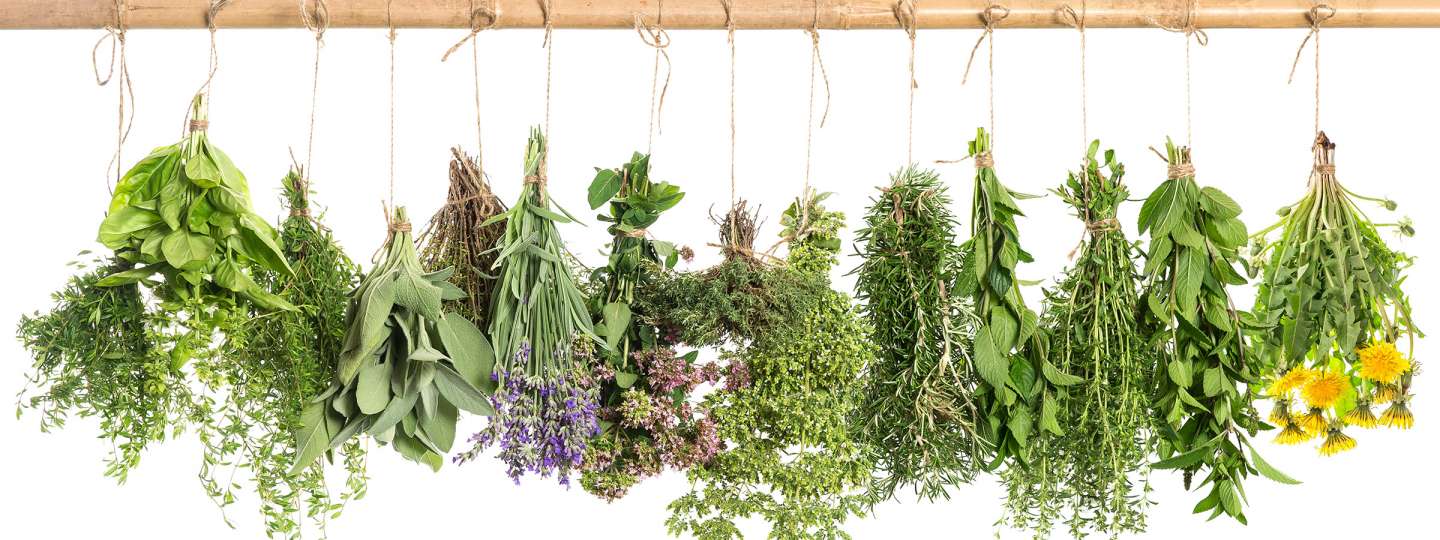Spices Used to Create Essential Oils
A
Anise, Star (Illicium verum) Also referred to as aniseed, anise is a flowering herb found throughout the Mediterranean and Southwest Asia. The tiny seeds of this plant have been revered for centuries for their culinary and medicinal properties. Anise is believed to have been cultivated in Egypt and the Middle East during ancient times, and is mentioned in the works of the Greek scholars Pliny and Dioscorides. Anise made its way to Europe during the Middle Ages, where it was cultivated and highly prized as a culinary flavor and herbal remedy. Anise seed has a distinct, sweet, licorice-like flavor and aroma that’s found in a great variety of European and Middle Eastern confections. Star anise is a species of anise that differs from traditional anise in certain ways, but has the same distinct, licorice aroma due to anethole, a phytochemical found in both traditional and star anise. Star anise essential oil has a warm, spicy, licorice-like scent that’s balancing, comforting and uplifting.
Atlas Cedar (Cedrus atlantica) The Atlas cedar is a large evergreen native to Algeria and Morocco. It’s primarily an ornamental tree that thrives in temperate climates. Ancient Egyptian manuscripts indicate Atlas cedar oil was used in the mummification process. Like other species of cedar, Atlas cedar is a natural insect deterrent, and the wood is used in the manufacture of furniture such as wardrobes and drawers. Atlas cedar oil has a potent, pungent aroma that’s woodsy and slightly sweet.
Balsam Fir (Abies balsamea) Native to regions of North America, many Canadians and Americans will recognize the Balsam fir evergreen as one of the most popular species of Christmas tree. Historically, Balsam fir was used as a traditional remedy by some Native American tribes. As an essential oil for aromatherapy, Balsam fir oil has a clean, refreshing, woodsy, earthy aroma that’s balancing and empowering.
Basil (Ocimum basilicum) Considered a sacred herb in India and in other cultures, basil is one of the most popular culinary herbs in the world, with a long history of use for both culinary, medicinal, and religious purposes. It’s mentioned in many of the classic herbal compendia, and in ancient times inspired both reverence and scorn. As ridiculous as it may seem today, basil was once thought to be able to spontaneously generate and/or grow scorpions, sometimes in the brain! Basil is a part of the traditions of many religions around the world, and some cultures consider it an aphrodisiac. For aromatherapy purposes, basil essential oil has a warm, spicy, pungent aroma that’s uplifting, energizing, and purifying.
Bergamot (Citrus bergamia) Bergamot is a citrus tree widely cultivated in certain coastal regions of Italy and Sicily. The name bergamot is actually derived from Bergamo, a city in Lombardi, Italy, where commercial use of the tree originated. Bergamot is actually a hybrid, or a cross between orange and lemon trees, with an aroma that’s more orange than lemon. Bergamot is popular both as a scent and a flavoring. You’ll find its distinct, spicy-citrusy flavor as an integral component of cherished foods and beverages such as Earl Grey tea and Turkish Delight. This Middle Eastern confection is one that fans of the book The Lion, The Witch and The Wardrobe will remember as the sweet treat highly desired by younger brother Edmund. As a scent, bergamot’s subtle citrus/spice aroma is a common addition to many perfumes and cosmetics, and it works extremely well in combination with a wide variety of other essential oils.
Camphor, White (Cinnamomum camphora) Camphor is a large, fragrant evergreen tree native to many countries in the Far East, including China, Japan, Taiwan, Korea and Vietnam. Its potent, medicinal aroma has been, and still is, revered in many cultures as a fragrance, an herbal remedy, and an insect deterrent. Its fragrance is so distinct that an entire scent classification is named after it “camphoraceous”. Camphor was used for a variety of medicinal purposes in ancient times. During the epidemic of the Black Plague of the Middle Ages camphor was used as a fumigant. In India, camphor is valued as incense for religious ceremonies since the fumes aren’t irritating to the eyes, as many other aromatics are. Camphor has a penetrating, medicinal aroma that’s purifying, energizing, and invigorating.
Cedar (Juniperus virginiana) Our cedarwood oil is extracted from Juniperus virginiana, a cedar species native to North America. This medium to large evergreen can live for many centuries, with the oldest reported specimen reaching over 900 years old. Like many species of cedar, its wood repels insects, especially moths, so it’s often used in furnishings for clothes such as cedar chests. Cedarwood oil is one of the few essential oils that improves with age. Cedarwood oil has a warm, woodsy, balsamaceous fragrance that’s both soothing and strengthening.
Chamomile (Chamaemelum nobile) Chamomile is a flowering plant with a mild, apple-like aroma whose flowers are often mistaken for daisies. In fact, its name is loosely interpreted from Greek as earth apple, ground apple or apple on the ground. In Spanish it’s referred to as manzanilla, or little apple. With a long history of use for a variety of ailments, chamomile is one of the most popular herbal remedies in the world, and is mentioned in many ancient medical texts. In ancient Egypt it was used as a medicinal herb and an offering to the sun god Ra due to the flowers’ resemblance to the sun. Ancient Greeks and Romans used it as a fragrance for baths, as an herbal remedy, and as a flavoring for drinks. English Saxons considered chamomile one of their nine sacred herbs, and used it to lighten their hair. Today there are two types of chamomile used in commerce, Roman chamomile (Chamamelum nobile) and German chamomile (Matricaria recutita), with the German variety being more prevalent. Chamomile essential oil has a delightfully sweet aroma that’s relaxing, calming, soothing and revitalizing.
Cinnamon (Cinnamomum zeylanicum) Like other spices, cinnamon was an extremely valuable trade commodity in ancient times. Extracted from the bark of trees from the Cinnamomum genus, cinnamon has a very distinct flavor and aroma that’s warm, spicy and aromatic. Cinnamon’s value was such that it was considered a gift worthy of only royalty and divinity by many different cultures. It was revered as a spice and a flavoring for beverages, but its source was a closely guarded secret for centuries due to its fantastic value. Cinnamon is mentioned often in the Bible, and in ancient manuscripts from Egypt, Rome, Greece, China, India, Arabia and many others. Cinnamon oil’s warm aroma and spicy overtones are ideal for comforting and energizing. NOW Solutions offers two different varieties of cinnamon oil, Cinnamon Bark Oil from Cinnamomum verum and Cinnamon Cassia Oil from Cinnamomum cassia.
Citronella (Cymbopogon winteranius) Citronella is another name for lemongrass, a genus of several tropical plants with a subtle citrus aroma belonging to the grass family. Citronella grasses are used for both culinary and medicinal purposes, but are known to many as a natural insect deterrent. Avid gardeners will often plant citronella grass throughout their gardens to deter mosquitoes and other insects. Historically citronella has been used primarily as a culinary herb, particularly in Asian cuisine, and to a lesser extent as a medicinal herb in a number of different cultures. Citronella has a pungent, musky, citrusy aroma that’s clarifying, freshening and purifying.
Clary Sage (Salvia sclarea) Also referred to as simply clary, clary sage is a plant native to the Mediterranean region with a history of use as a medicinal herb, although modern research has disproven several of its purported historical benefits. The word clary is derived from the Latin word clarus, which means “clear”. In ancient times it was called “clear eyes” due to its historical use as an herbal remedy for tired, strained eyes in various cultures. Clary sage is also thought to be a potent herbal aphrodisiac. Clary sage oil has a herbaceous, lavender-like aroma that’s balancing, focusing and stimulating.
Clove (Eugenia caryophyllata) If you’ve been around fresh cloves you probably knew it pretty quickly. Cloves are the pungent, strongly aromatic buds of the Eugenia caryophyllata, an evergreen native to Indonesia but now cultivated in India, Pakistan and other areas of the Middle East. They’re one of the most widely used spices in the world, lending their warm aroma and flavor to a variety of cuisines from around the world. Cloves also have a history of use as an herbal medicine, and as a breath freshener. In ancient China those addressing the emperor used cloves to freshen their breath. Clove essential oil has a warm, pungent, spicy aroma that’s ideal for soothing and comforting.
Cypress (Cupressus sempervirens) – Cupressus sempervirens is a species of cypress tree, also known as the Mediterranean and Italian cypress. This evergreen tree is native to the Mediterranean region and is an iconic ornamental tree due to its very slender, tapering shape, often likened to an exclamation mark. Cypress doesn’t have a history of use for medicinal purposes, but it was strongly associated with the afterlife and the underworld in ancient times, and was often a part of the funerary traditions of certain cultures. Cypress trees were often planted in cemeteries, and you’ll still find them in many cemeteries in Europe and the Middle East. Cypress trees are long-lived, with one tree in Iran estimated to be more than 4,000 years old. Cypress essential oil has a sweet, warm, balsamic aroma with a hint of juniper and is centering, balancing and clarifying.
Eucalyptus (Eucalyptus globulus) Native to Australia and to a lesser extent New Guinea and Indonesia, eucalyptus is deeply woven into the culture and history of The Land Down Under. It’s the dominant species of tree on the Australian continent and is mentioned extensively in Australian literature, music, art, and more. Eucalyptus leaves are a staple in the diet of the koala bear. Eucalyptus trees are commonly referred to as gum trees due to their high content of volatile eucalyptus oil. Their oil content is so pervasive that large stands of eucalyptus trees will often have a blue haze surrounding their crowns during warmer months due to oil droplets dissipating into the air. In fact, the Blue Mountains of Australia are named after this phenomenon. As an essential oil eucalyptus has a strong camphoraceous aroma that’s revitalizing, invigorating and clarifying. NOW Solutions also offers Eucalyptus radiata essential oil, another species of eucalyptus with a sweeter and slightly fruity aroma.
Frankincense (Boswellia carterii) Frankincense is the name of the fragrant resin of certain species of Boswellia tree. The name is from the early French name franc encens, or high quality incense, a nod to the resin’s highly desirable aroma. In ancient times frankincense was a valuable trade commodity, primarily as incense for use in religious ceremonies, and was also used as an herbal medicine throughout Asia, Africa and India; frankincense is well-regarded in Ayurvedic medicine. Frankincense is one of the few essential oils that improve with age. Frankincense has a unique fragrance with hints of camphor and citrus that’s ideal for relaxing, focusing and centering.
Geranium (Pelargonium graveolens) When it comes to flowers you won’t find many more popular or ubiquitous than the geranium. A staple in floral beds and flower pots the world over, geraniums come in a variety of colors and thrive in almost any soil that’s not saturated with water. The name geranium is actually used for two different genera, Geranium and Pelargonium, a source of confusion to this day. Pelargonium is the genus most often found in plant nurseries and home gardens, and the one most often used for essential oils, but Geranium is the genus that’s considered true geranium. Geranium has a long history of use as an herbal remedy. Geranium essential oil has a sweet, floral aroma that’s balancing, purifying, and normalizing.
Ginger (Zingiber officinale) While many spices were highly valued in ancient times, perhaps none were as valuable as ginger. You won’t find many herbs with a longer history of human use. Early Indian and Chinese manuscripts indicate ginger was widely used as an herbal root tonic for a great variety of ailments and as a flavoring agent. In ancient Rome ginger was highly valued for its medicinal properties. Unlike most other herbs, ginger isn’t found growing wild, and its origin is somewhat of a mystery. Ginger oil has a warm, spicy aroma that’s balancing, clarifying and stabilizing.
Grapefruit (Citrus paradisi) Known for their mouth-puckering tartness, grapefruits are actually a hybrid of the sweet orange and the pomelo. They’re believed to have originated in Barbados and were first discovered by Europeans visiting the island in the mid-1700s. Today they’re still referred to as one of the Seven Wonders of Barbados. As an essential oil grapefruit has a sweet, citrusy, slightly pungent aroma that’s purifying and uplifting.
Hyssop (Hyssopus officinalis) A perennial herb native to the Mediterranean region, hyssop has long been associated with purity and purification, especially for religious purposes. Considered a holy herb in some cultures, it was used to cleanse sacred sites and was hung around homes to protect from evil spirits. Hyssop is mentioned several times in the Bible, but many experts believe the herb in reference wasn’t actually hyssop, but some other herb. Hyssop is an ingredient in certain liqueurs, with the most popular being the French liqueur Chartreuse. This herb is also used for culinary purposes, although only a little is required for most applications as hyssop is very strong. Hyssop has a sweet, herbaceous aroma that’s clarifying, refreshing and purifying.
Juniper Berry (Juniperus communis) Known as common juniper, Juniperus communis is an evergreen tree species widely dispersed throughout the temperate Northern Hemisphere. As with many medicinal herbs and botanicals, the first mention of juniper berries as a medicine is believed to have been in Egyptian manuscripts, but juniper has been used both medicinally and culinarily by many different cultures, including ancient Greeks, Romans and Indians. Native American Indians used juniper berries extensively for a variety of purposes. Imbibers of gin will be very familiar with juniper berries, even if they don’t realize it – they’re responsible for gin’s distinct flavor. The use of juniper as a spice is popular in European cuisines. Juniper berry essential oil is well-regarded in the perfume industry. It has an invigorating, slightly fruity and floral fragrance that’s described as clear and fresh. Juniper berry oil is balancing, empowering and restorative.
I am text block. Click edit button to change this text. Lorem ipsum dolor sit amet, consectetur adipiscing elit. Ut elit tellus, luctus nec ullamcorper mattis, pulvinar dapibus leo.












